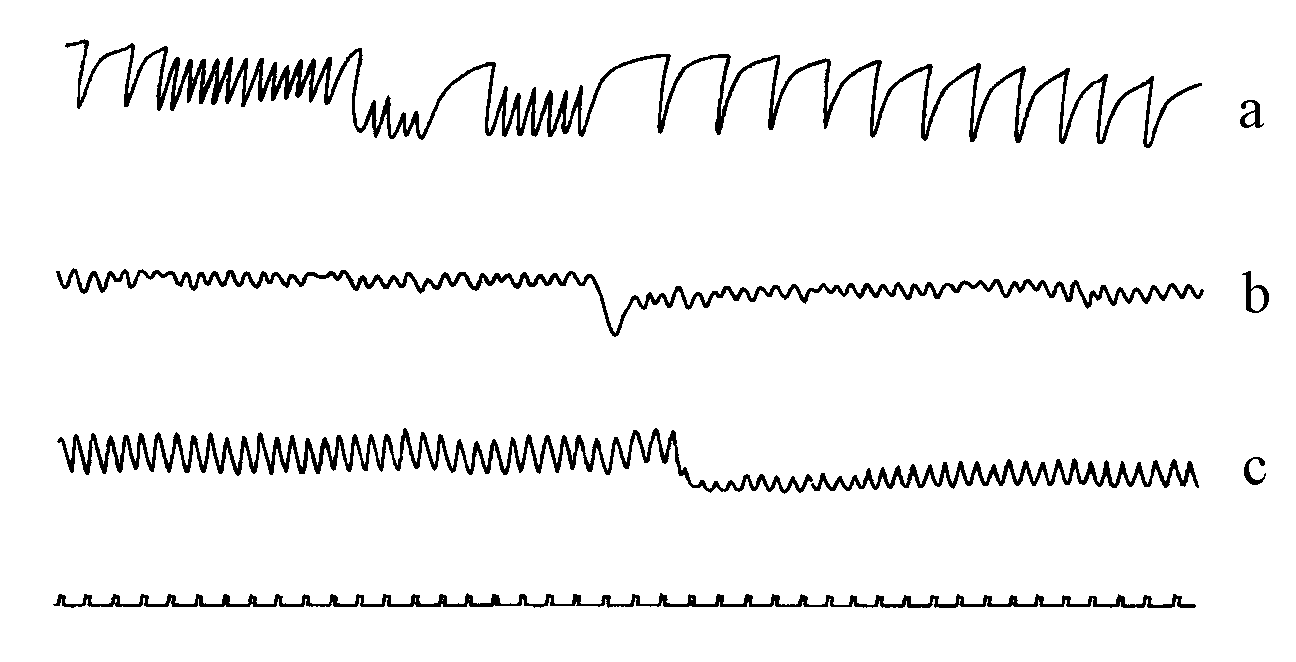
The breathing pattern shows 'freezing'
I.P. Levshina and N.N. Shuikin
Institute of Higher Nervous Activity and Neurophysiology, Russian Academy of Sciences, Moscow, Russia
The special type of external breathing in rats is developed spontaneously or induced by an external factor. The figure shows different breathing patterns of rats: a - the special pattern, b and c - usual patterns. The special type of breathing is accompanied by 'freezing'. The state of 'freezing' is produced by a light pressure on the neck. Freezing is not a passive type of behaviour. This is a way to escape danger.

Figure 1. Different types of breathing in rats: a. the special pattern of breathing; b, c. usual patterns. The downward deflection of the line corresponds to breathing in. The time scale is graduated in 1 s.
Rats with the propensity to freezing demonstrated higher levels of exploratory and locomotor activities in the Porsolt test and a better avoidance learning in the shuttle-box, than rats without propensity to freezing. Rats with the special type of external breathing differ significantly from those in normal state in lower open-field activity. Rats with different propensity to freezing have different behavioural strategies. The special type of external breathing represents a reliable marker of the state in rats.
Poster presented at Measuring Behavior 2000, 3rd International Conference on Methods and Techniques in Behavioral Research, 15-18 August 2000, Nijmegen, The Netherlands